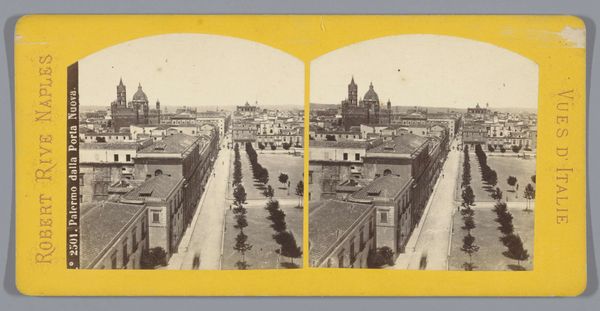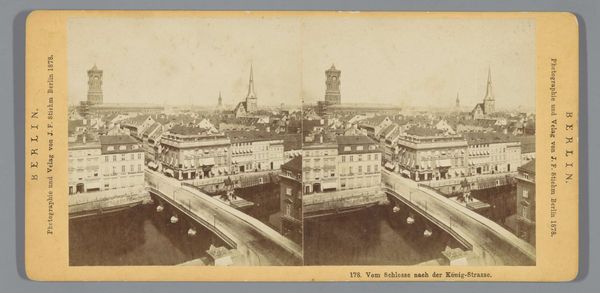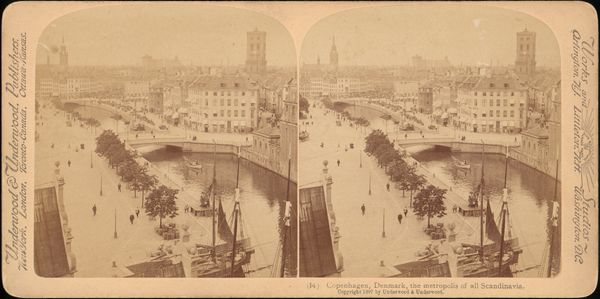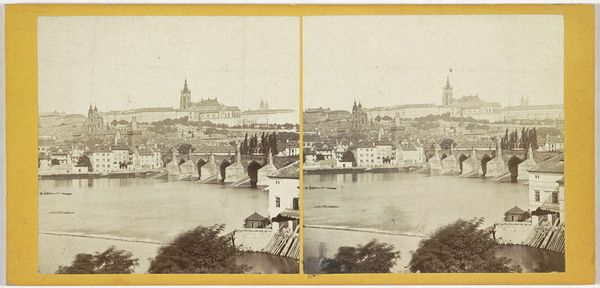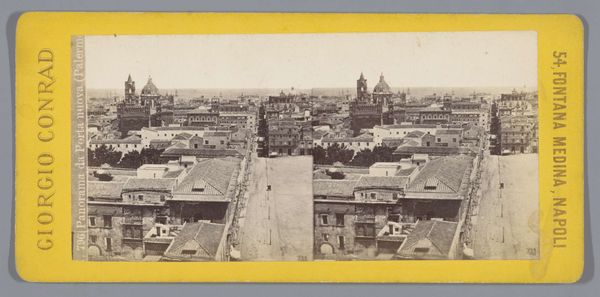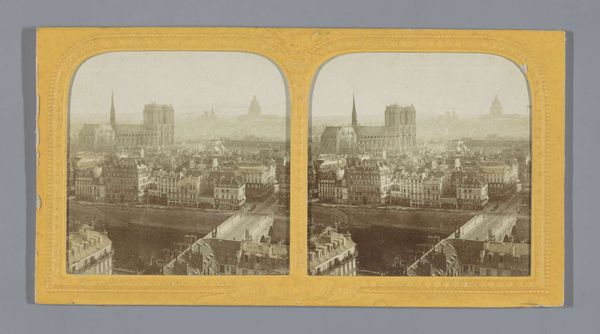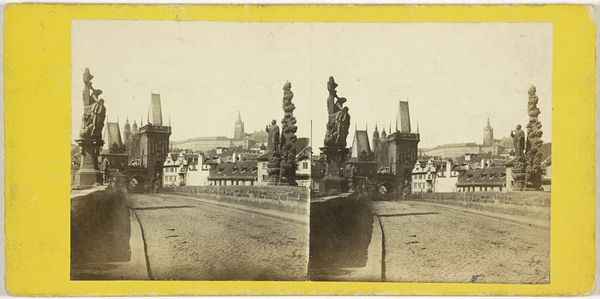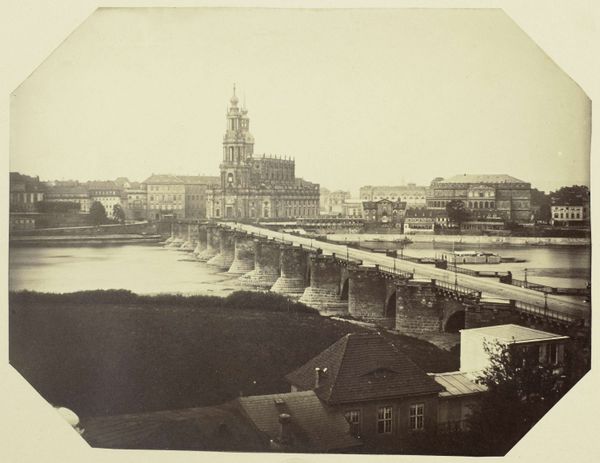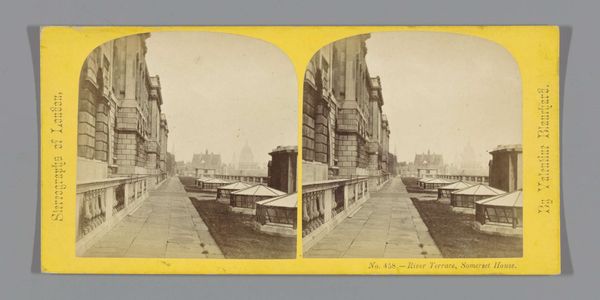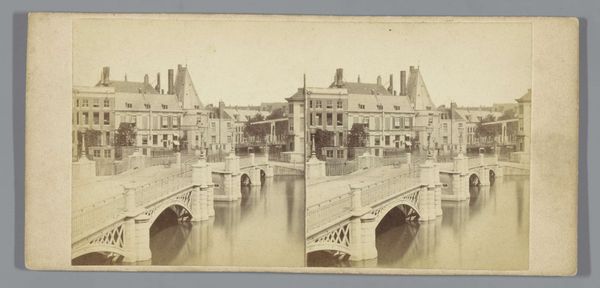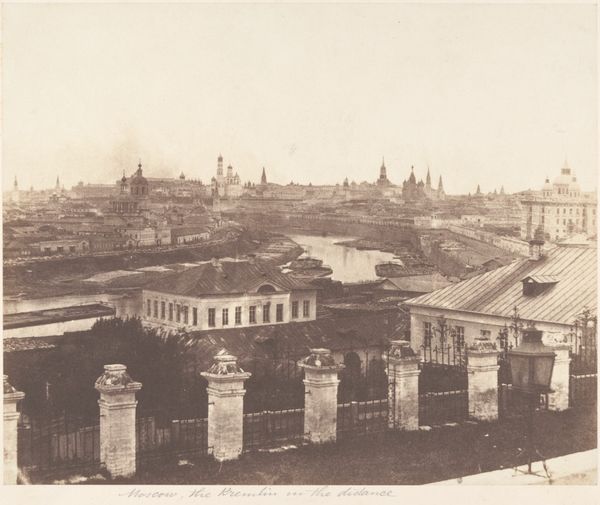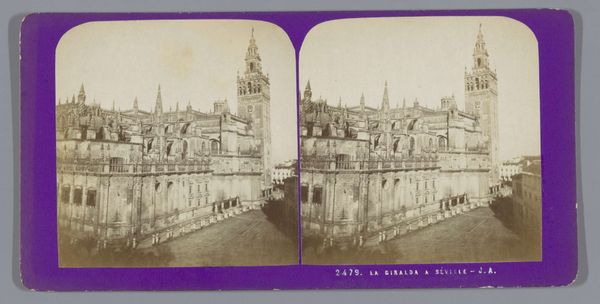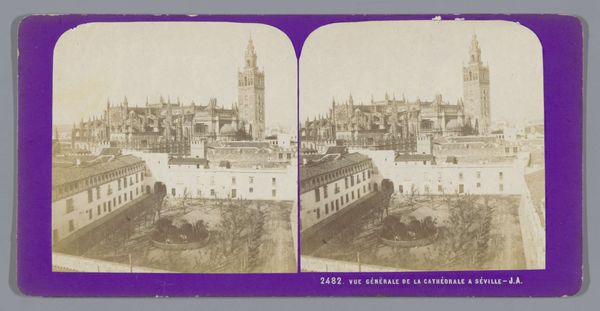
Gezicht op de Augustusbrücke en de Katholische Hofkirche in Dresden, Duitsland 1873 - 1882
0:00
0:00
Dimensions: height 87 mm, width 178 mm
Copyright: Rijks Museum: Open Domain
Curator: Looking at this gelatin silver print by Laurentius Herzog, taken between 1873 and 1882, entitled “View of the Augustusbrücke and the Katholische Hofkirche in Dresden, Germany,” I’m struck by its structured composition. The bridge leads our eye directly toward the cathedral. Editor: There’s something very compelling about the raw quality of the photographic process here. You can see the evidence of the darkroom right on the surface of the print. This isn’t some slick contemporary image; it's made through human hands, chemistry, and light. Curator: Precisely. The geometry provides an inherent stability. Observe the rigid pillars juxtaposed with the baroque flair of the architecture. A dialogue between precision and exuberance, order and detail. Editor: And consider the labor! Producing gelatin silver prints wasn't a simple process. Coating glass plates, meticulously developing each print. Herzog was running a commercial operation and mass producing these cityscapes and others; and we often forget that these images circulated not as high art objects but more as everyday visual matter of mass culture. Curator: That production and distribution context is relevant. Yet, stripped of that original function, consider now only its form: The artist’s deliberate use of perspective creates a powerful sense of depth; notice the tonal range and the considered placement of light and shadow... the cathedral functions almost as an apparition. Editor: Sure, but the "apparition" emerges through the physicality of the medium. How was the emulsion created, the chemicals sourced, and the prints mounted for sale? Also, look at the subtle differences and irregularities of the print that hint at the labor of making that thing. And let's also think about this photographic boom and that Dresden emerges in relation to this boom and as such to processes of industry, tourism and even forms of documentation. Curator: I recognize that the photograph serves as historical document, recording this specific moment. But its visual qualities are far from passive. I find an interesting formal tension in the receding plane. It moves beyond mere representation toward pictorial language. Editor: But even our discussion has, now, inevitably shaped how this picture means. You see? Even viewing is a process in itself, not a solitary or neutral act! Curator: A valuable point to consider indeed when appreciating the formal composition within Herzog's frame. Editor: Yes. I think it really changes how you look at and experience something knowing its trajectory or provenance, but that's me.
Comments
No comments
Be the first to comment and join the conversation on the ultimate creative platform.
